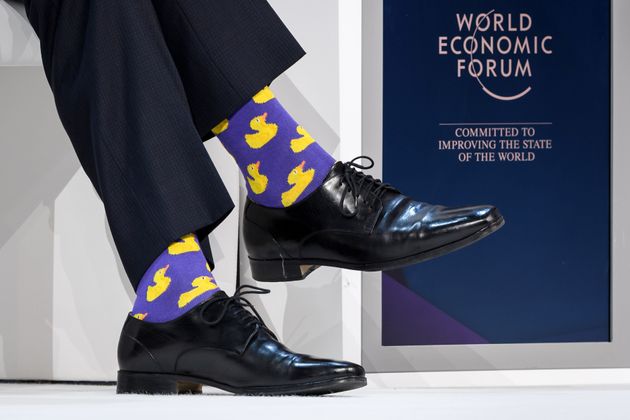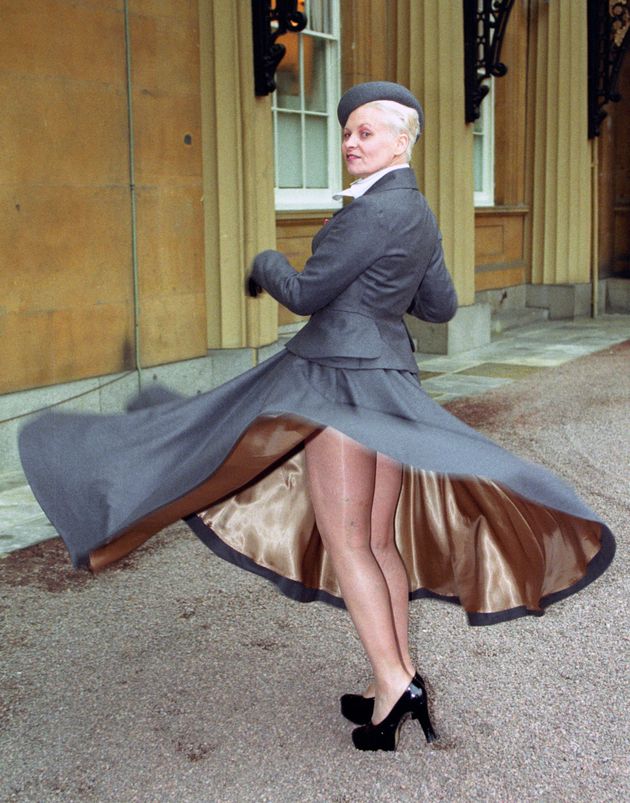When confronted with a rule, do you instinctively want to break it? Do regulations bring out the rebel in you? Do you think dress codes are for spineless zombies?
I went to a school that was ridiculously strict about uniform. Not just ‘wear a navy v-neck jumper’. But ‘wear this v-neck jumper from this shop.’
When it came to shoes we were given a choice of two equally-hideous girlie styles from Clarks. The sight of them made me feel nauseous.
We were told to wear one style of navy school coat. Obtainable at a rip-off price from a store that the school governors probably had shares in.
I was constantly in trouble for flouting the rules. I wore the navy v-neck. But I wore mine six sizes too big so it was the same length as my (hitched up) skirt and the sleeves flapped around my ankles.
I cut up and reshaped my school coat into a style that didn’t make me look like an extra from Little House on the Prairie.
I strode straight past the Clarks shoes and bought a clumpier version of the regulation lace-ups from the boy’s section.
In my school photos I am rocking this look, together with adolescent greasy hair and acne. It wasn’t stylish. It certainly wasn’t fashion. But I was different, and that was all I cared about. I hated being forced into a uniform. Dressing the same as everyone else was, and still is, my idea of hell.
Fortunately, as an adult I’ve never had to work anywhere with a dress code. But if you are forced into a sartorial straightjacket by your employer, or by societal or political expectations, how can you express your individuality. How does the unique you shine though? And what do others think of you if you flout convention?
Research shows that just a small tweak to the dress code can raise others’ opinions of you. When researchers from Harvard Business School asked for impressions of a professor who lectured in red Converse trainers, instead of traditional shoes, they found he was regarded as being of high status and highly competent.
When Justin Trudeau shows up at an international forum he does so in a regulation navy suit, but with a pair of funky socks peeking out of his conventional shoes. In January 2018, he donned a pair of purple socks with yellow ducks on to the otherwise colourless World Economic Forum. His socks even have their own Twitter account.

In the HBS research study a man at a black-tie affair was viewed as having higher status and competence when wearing a red bow tie. Departures from the norm suggest that this is someone who can afford to follow their own rules and not bow to convention.
Facebook founder Mark Zuckerberg turned up to a key meeting with investors – a meeting that would prompt most of us to scrub up in our smartest garb – in his usual hoodie and jeans. When you’re at the top of the game you can afford to ignore the rules.
When queen of punk, designer and social activist Vivienne Westwood received her OBE from the Queen in 1992 she left the twin set and pearls at home – and also left off her knickers.

Small acts of rebellion can do wonders for our sense of self. They affirm our individuality in a world that increasingly demands conformity. They say, ‘This is who I am. Take it or leave it’.
Helena Bonham-Carter epitomised this approach by attending the Golden Globe Awards wearing one red and one green shoe. For no other reason than that she wanted to. Rock on.
There is a risk to deviating from the norm. Social exclusion is one. Ridicule or humiliation is another. But research shows that, in the right context, the rule-flouter is perceived positively by others who assume he or she is powerful enough to risk the social costs of their behaviour.
Fashion should be about fun, about fantasy and about personal freedom. So, the next time you put an outfit together, ask yourself who you are dressing for. And I hope you come back with a great big ME.
Grace Kelly once said, ‘Don’t be like the rest of them, darling’. Whether that means leaving off your undies, wearing odd shoes or donning Disney socks, it’s about being the you that you want to be, not who others think you should be.